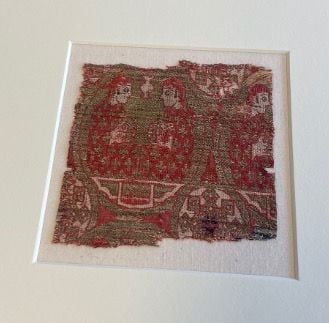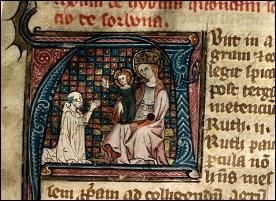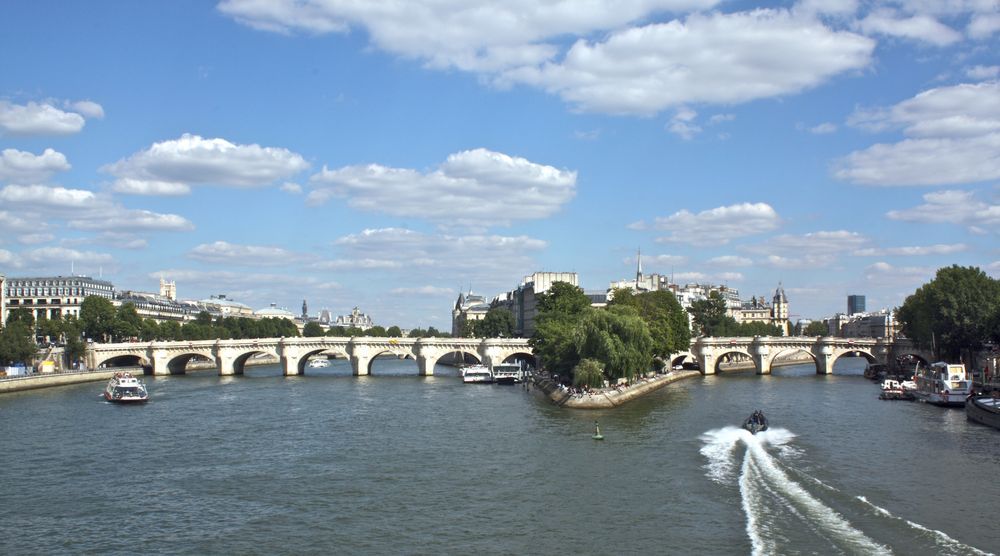
Cdn Society of Medievalists/Société Canadienne des médiévistes
@canmedievalists.bsky.social
Official account of the CSM / SCM -- join us at https://www.canadianmedievalists.org/.
Banner image: University of Victoria Library, MS Doc.Brown, https://www.uvic.ca/library/locations/home/spcoll/collections/medieval/doc-brown-2.php
Banner image: University of Victoria Library, MS Doc.Brown, https://www.uvic.ca/library/locations/home/spcoll/collections/medieval/doc-brown-2.php
Tudor tournaments were thus, Emma-Catherine argues "deeply rooted in Early English tournaments," not Burgundian models.
July 16, 2025 at 1:51 PM
Tudor tournaments were thus, Emma-Catherine argues "deeply rooted in Early English tournaments," not Burgundian models.
Emma-Catherine Wilson discussed early Tudor Tournament letters arguing that rather than relying on Burgundian models as other scholars have suggested, the Tudors drew from "a long lineage of insular tradition" in issuing challenges and creating the literary pageantry of tournaments.
July 16, 2025 at 1:51 PM
Emma-Catherine Wilson discussed early Tudor Tournament letters arguing that rather than relying on Burgundian models as other scholars have suggested, the Tudors drew from "a long lineage of insular tradition" in issuing challenges and creating the literary pageantry of tournaments.
Her work has traced the life of this textile fragment from an Islamic courtly setting in Grenada to a Christian Church in Castile. The fabric was eventually cut and survives now in fragments across the world. In its fragmented form these textiles served as book and treasure wraps.
July 16, 2025 at 1:51 PM
Her work has traced the life of this textile fragment from an Islamic courtly setting in Grenada to a Christian Church in Castile. The fabric was eventually cut and survives now in fragments across the world. In its fragmented form these textiles served as book and treasure wraps.
Next up was Iris Bednarski who shared her work on a textile fragment now housed at the McGill Museum of Fine Arts. The pic here was kindly provided by Iris. The project attempted "to reconstruct the life of [this] object". The fragment is probably from Grenada and was likely created in the 13th c.

July 16, 2025 at 1:51 PM
Next up was Iris Bednarski who shared her work on a textile fragment now housed at the McGill Museum of Fine Arts. The pic here was kindly provided by Iris. The project attempted "to reconstruct the life of [this] object". The fragment is probably from Grenada and was likely created in the 13th c.
of the MF and their uses. See the project here: manipulus-project.wlu.ca.

The Electronic Manipulus Florum Project
_______________________________________________
manipulus-project.wlu.ca
July 16, 2025 at 1:51 PM
of the MF and their uses. See the project here: manipulus-project.wlu.ca.
nothing has survived to the present day. Dr. Bacola also noted the importance of the Fenland in the area, allowing for isolated conditions for those (saints) seeking solitude. Using ArcGIS also brings to light local power dynamics between neighbouring monasteries.
July 10, 2025 at 12:14 PM
nothing has survived to the present day. Dr. Bacola also noted the importance of the Fenland in the area, allowing for isolated conditions for those (saints) seeking solitude. Using ArcGIS also brings to light local power dynamics between neighbouring monasteries.
Finally Meredith Bacola described how she is using ArcGIS as a tool for understanding the development of Crowland Abbey. Amongst other fascinating findings, using ArcGIS made it clear that the geography supported the information found in hagiographies of St. Guthlac (and important finding since
July 10, 2025 at 12:14 PM
Finally Meredith Bacola described how she is using ArcGIS as a tool for understanding the development of Crowland Abbey. Amongst other fascinating findings, using ArcGIS made it clear that the geography supported the information found in hagiographies of St. Guthlac (and important finding since
was being read, but in the libraries, not the infirmaries, he speculates. @winstonblack is on bluesky, so ask questions!
July 10, 2025 at 12:14 PM
was being read, but in the libraries, not the infirmaries, he speculates. @winstonblack is on bluesky, so ask questions!
kept in the infirmary not the library, and shows clear evidence of the incorporation of the textual knowledge in the MS into medical practice. Dr. Black also hinted that there was a distinction to be made between textual medicine and the medicine of the infirmaries. Constantine Africanus' new work
July 10, 2025 at 12:14 PM
kept in the infirmary not the library, and shows clear evidence of the incorporation of the textual knowledge in the MS into medical practice. Dr. Black also hinted that there was a distinction to be made between textual medicine and the medicine of the infirmaries. Constantine Africanus' new work
Next Winston Black reminded us that we should not be ignoring the role of monasteries in the history of medicine. Perhaps the locus of that medical knowledge was not only found in the libraries and scriptoria but in the infirmaries. Dr. Black's work on Bethesda NLM E8 suggests that manuscript was
July 10, 2025 at 12:14 PM
Next Winston Black reminded us that we should not be ignoring the role of monasteries in the history of medicine. Perhaps the locus of that medical knowledge was not only found in the libraries and scriptoria but in the infirmaries. Dr. Black's work on Bethesda NLM E8 suggests that manuscript was
a monastic community, Hildegard's own monasteries suggest her attitude may have been more flexible on this than her writing suggests. There is some evidence that suggests the presence of conversae in or near Rupertsberg. As always, Gudiño warns categories for class and types of religious are porous.
July 10, 2025 at 12:14 PM
a monastic community, Hildegard's own monasteries suggest her attitude may have been more flexible on this than her writing suggests. There is some evidence that suggests the presence of conversae in or near Rupertsberg. As always, Gudiño warns categories for class and types of religious are porous.
Unfortunately, the paper by Dr. Laumonier on Montpelier butchers and their neighbours and environs had to be cancelled. We look forward to hearing about this project at future CSM Annual Conferences.
July 7, 2025 at 6:13 PM
Unfortunately, the paper by Dr. Laumonier on Montpelier butchers and their neighbours and environs had to be cancelled. We look forward to hearing about this project at future CSM Annual Conferences.
the consequences of such events much more visible. Attached here is a modern image of Pont Neuf, (credit: Wiki Commons) which is now the oldest bridge in in Paris, opened in 1607, long after the Great Winter.

July 7, 2025 at 6:13 PM
the consequences of such events much more visible. Attached here is a modern image of Pont Neuf, (credit: Wiki Commons) which is now the oldest bridge in in Paris, opened in 1607, long after the Great Winter.
This resulted in the Left Bank being isolated from the Île de la Cité or beyond. These parts of Paris became only accessible by ferry making trade and travel from the Left Bank much more difficult. Dr. Hutchison's larger point was how mapping some of the events found in chronicles can make
July 7, 2025 at 6:13 PM
This resulted in the Left Bank being isolated from the Île de la Cité or beyond. These parts of Paris became only accessible by ferry making trade and travel from the Left Bank much more difficult. Dr. Hutchison's larger point was how mapping some of the events found in chronicles can make
the importance of locating people in space as well as time for historians. Next up, CSM's treasurer, Emily Hutchison, who explored some of the impacts of the onset of the Little Ice Age on Paris. One example: when the Seine broke up after the "Great Winter" of 1408, it took down three bridges.
July 7, 2025 at 6:13 PM
the importance of locating people in space as well as time for historians. Next up, CSM's treasurer, Emily Hutchison, who explored some of the impacts of the onset of the Little Ice Age on Paris. One example: when the Seine broke up after the "Great Winter" of 1408, it took down three bridges.
Amongst her interesting findings, that jongleurs lived near butchers and tanners, near Jongleur street, but perhaps not ON it, interacted with Jewish populations, and lived near taverns and places that would have allowed for good busking. It was fascinating and important research, that demonstrates
July 7, 2025 at 6:13 PM
Amongst her interesting findings, that jongleurs lived near butchers and tanners, near Jongleur street, but perhaps not ON it, interacted with Jewish populations, and lived near taverns and places that would have allowed for good busking. It was fascinating and important research, that demonstrates

